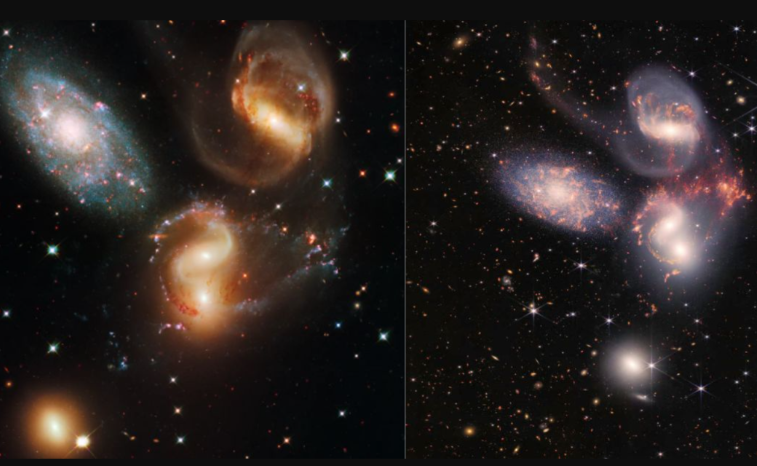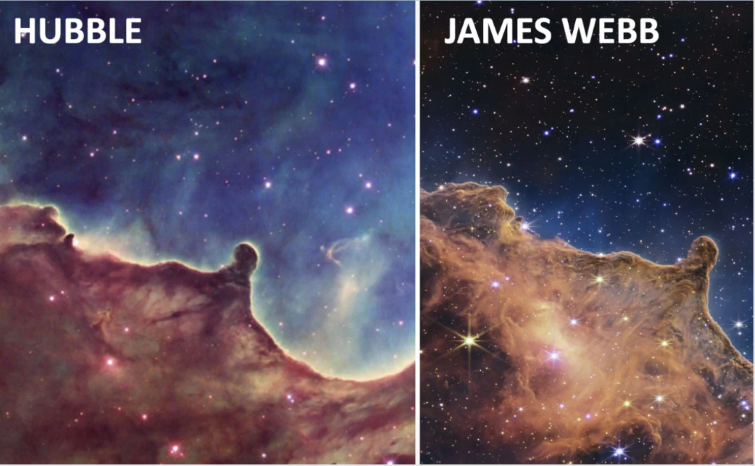A Message for The Hubble Space Telescope: We still need you!
 Wallpaper by river_rat on Wallpapers.com
Wallpaper by river_rat on Wallpapers.com
The Hubble Space Telescope (HST) has a serious history of almost 33 years, a history filled with numerous, often very dramatic events, some of which spoke of the near end of the telescope, of its deorbiting and going into oblivion.
Nevertheless, the telescope still works today. Somehow the question arose as to what will happen to it after the James Webb Space Telescope (JWST) is placed in its orbit. James Webb is still a more powerful telescope, and this is convincingly evidenced by the first, test recordings, and many thought that this is why Hubble is being scrapped.
But serious astronomers are horrified by such ideas and wish the aging telescope a long working life. And indeed, Hubble continues to leave us breathless with its new images of the universe, and astronomers and other scientists say that Hubble is still capable of great discoveries.
JWST is capable of detecting infrared waves, which makes it ideal for observing distant galaxies.

On the other hand, HST observes the universe at other wavelengths, among which the high-energy ultraviolet light emitted, for example, by stars during their explosions is particularly valuable. In addition, the HST also sees very well at visible wavelengths, and it is precisely from these wavelengths that this telescope provides us with fantastic photos.
Because of these possibilities, HST is still in high demand. Engineers hope that it can last until the end of this decade, and with some luck, even longer. And the problem is that NASA does not plan to build another powerful UV telescope in the next twenty years.
But there is something else, perhaps more important than anything else. Hubble and the Webb can perfectly complement each other and work together. For example, it is interesting to compare the photos of nearby galaxies recorded by Hubble with similar but distant galaxies recorded by the Webb.
In this way, interesting data on the evolution of galaxies can be obtained. Or it is very useful when studying exoplanets imaged with both telescopes. Each provides data that cannot be seen with any other telescope.

All in all, the most important problem is how long Hubble will be operational, and no one can reliably say that. Since it was put into orbit, Hubble has been visited five times for repairs and upgrades. It was between 1993 and 2009. But those visits were possible while the space shuttle was in use, and this spacecraft has not been since 2011.
Since then, no Hubble servicing has been planned at all, and the telescope has been left to fend for itself and will continue to work – as long as it works. The basic systems that keep the telescope in operation are functional, but they are already old, and each built-in element has its own service life.
Sometimes when something breaks down, engineers fix it from the ground up, say they reset the computer, add software etc. In addition, operators find working procedures that save individual elements of the telescope and thus manage to extend their life.
Thus, they changed the way in which Hubble communicates with satellites for data transmission to Earth, and instead of using built-in transponders for data transmission every hour, they now collect more data and send it to Earth in one session. Less frequent activation of transponders extends their working life.
In any case, Hubble is still a very useful instrument. So far, it has made over 1.5 million observations, and these photos have served to gain new knowledge about the universe that science would not have reached otherwise.
Want to read more about the universe? Visit our blog!

